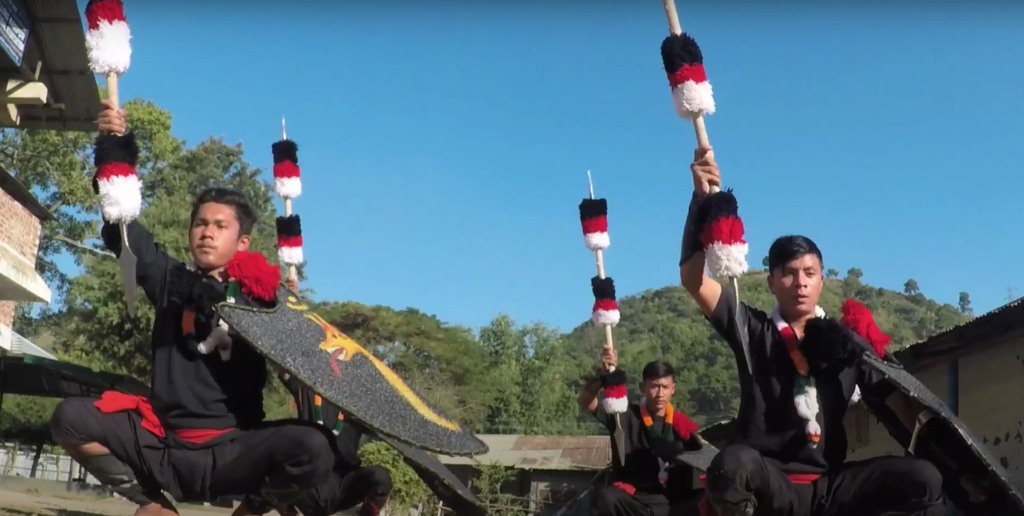Thang Ta is a folk dance of Manipur state. It is an ancient dance form that is a hybrid of combat and martial dance forms Thang-Ta is an essential aspect of Huyen Langlon (also spelled as Huyen Lallong) which means “The Art of the Sword and Spear”. The Meities clan is the founder of Thang Ta martial art dance form. It is hugely inclined towards the fighting techniques employed during the war.

Earlier it was a survival technique used to settle disputes between regional people. However, it turned into a reputable dance form, filled with fervor and vigor. It survived and flourished during the 1940s. Later it was performed in festivals to celebrate special events. It incorporates several deadly weapons, like a sword, spear, shield, etc.
Forms of Thang Ta
Thang Ta dance form is classified into three significant forms depending on the performance.
1. Combat – It is the most aggressive form where clashing of swords or spears is a significant component. The dance form is performed like a real fight.
2. Ritual – This form includes the practice of rituals and traditions as its fundamental component. It is solely related to Tantric practices.
3. Demonstration – The demonstration Thang Ta is known for the representation of fighting with spears and swords.
Thang Ta Performance and Techniques
As Thang Ta is a battle dance form there arises the need for full-fledged training programs for the performers. They have to go through thousands of sessions to display considerable control over their weapon.
The chief conformation among sword techniques is Lion posture, where the performer leans forward with one leg stretched backward. The body forms a 45-degree angle on the ground, and the legs are open wide apart. The performer chops the watermelon (placed on another person’s head) into slices with a swift move, not causing any harm to anyone. The spear technique is a bit tough and is taught only after mastering the sword one. It includes more of the lower body strength to efficiently handle the spear. The costumes should be designed where rapid and systematic war movements are viable.
